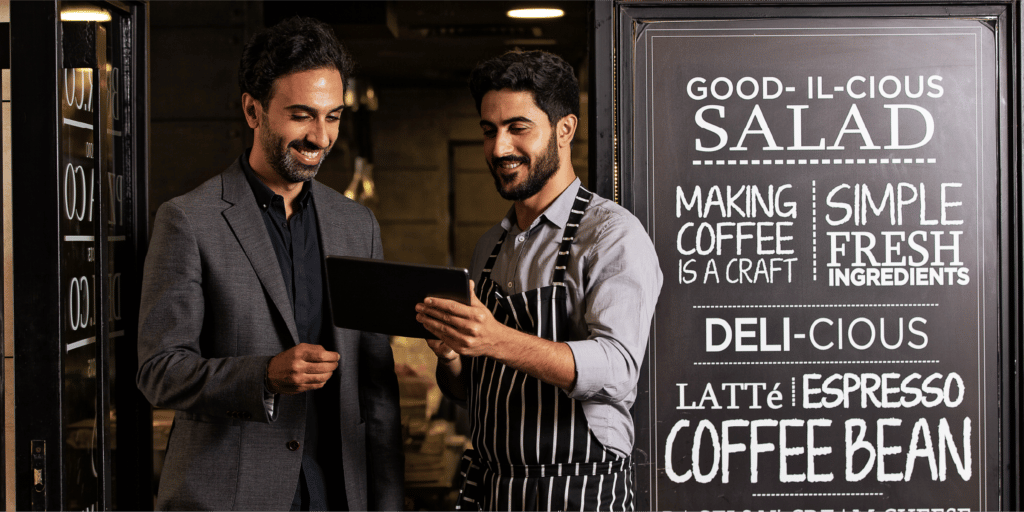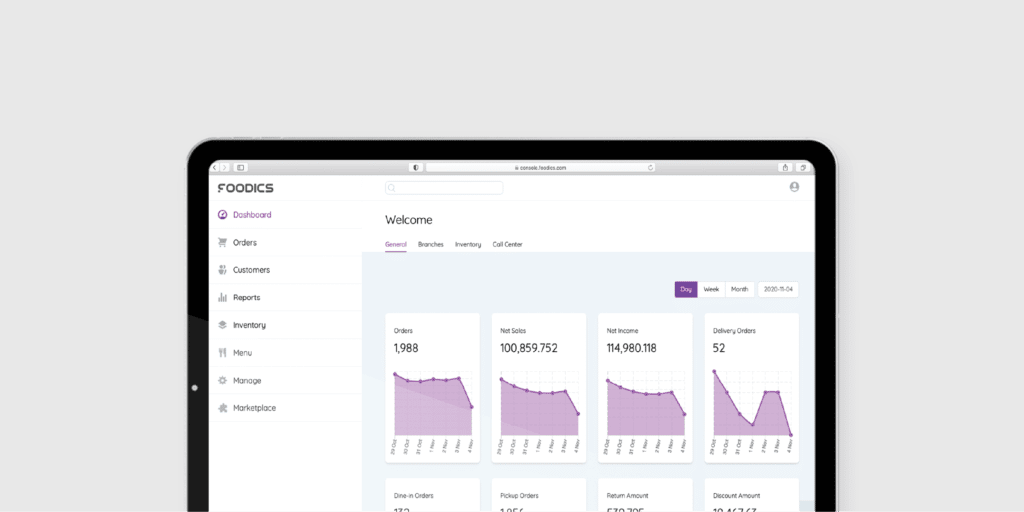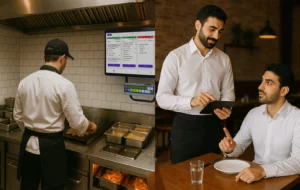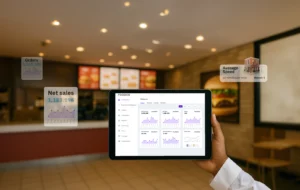Eventually, your restaurant opened its doors and customers began to try your food and express their opinions. As demand increased, you began to think more about how to maximize profits, adjust calculations, and minimize waste. This might be a daydream you have, or it might be a reality you are living now, and you would like to handle it well.
With the fierce competition in the restaurant industry and the economic changes, it is essential for any restaurant or café to rely on numbers and get back to the approved accounting equations to ensure its profitability and predict development trends down the line which can promote restaurant economic resilience and help in investing to achieve greater business growth.
In addition, using a sophisticated accounting app and an advanced point-of-sale system can greatly help you to collect and process data efficiently, quickly, and effectively. In this article, we aim at referencing some of the most important reports and basic accounting indicators to confirm that they should be on everyone’s radar from the first day of working in a restaurant or café.
Why is it important to Hire an Experienced Restaurant Accountant?

The idea of explaining some financial and accounting concepts in a series of articles or videos might seem sufficient for some to undertake this area on their own, but this is not something preferred by specialists or experts. Restaurant owners insisting on taking over the accounting of their business is similar to bringing in an accounting expert and assigning him the responsibility of preparing shawarma sandwiches and preparing the mix, both are bad ideas.
Accounting and bookkeeping should be respected as a separate domain and we cannot understate the fact that restaurant owners are supposed to take an active role in managing their staff, and developing growth strategies for their business. Employing an expert accountant in the F&B sector is ultimately about being a true partner for the restaurant owner and focusing on the financial performance of their facility, which will enable them to find ways to improve performance and reduce costs.
Following are the criteria to select an accountant:
- Have worked in the F&B sector for several years
- Knows the most important performance indicators and profitability criteria for restaurants
- Masters the accounting program that you will use in the restaurant
Key Reports to Read

Daily Sales Report
The daily sales report is your daily companion at the end of the day. You read it to learn the day’s progress in all its details in terms of the number of orders, type of meals, the performance of the branches, and level of profits. Reading it is like taking your body temperature to ensure everything is going smoothly. Besides comparison with yesterday’s report, you can also look back to the same day a month ago or even last year to see how your progress has evolved.
As an example, you can calculate or check the following items based on the report numbers:
- Top-selling and least-selling items
- Average total invoice value or by type of meal (breakfast, lunch, or dinner)
- Number of daily visitors during the week and across the hours of the day
- Average Revenue Per Visitor (Sales per Day / Number of Visitors per Day)
- The average income of each table or section of the restaurant (lounge or balcony)
The more specific the report, the better you can find the adjustments you need to boost your sales quickly and more precisely, for instance:
- Training waiters to market meals and present options better
- Re-organizing the layout of tables and chairs
- Promoting the restaurant mobile app and food ordering online through it
Revenue Report
The importance of the revenue report comes when you review it on a periodic basis (monthly, quarterly, or annually) to estimate the income received by the organization in total on the one hand, or in detail (by table or branch, for example) in order to form a forecast that can help you move forward.
For instance, customer spending may vary from one season to another and depending on the tourism season, religious and national occasions, which is clearly reflected in the revenue report to help you set a realistic budget that encompasses these factors.
Even though sales and revenues may sometimes be comparable in value, a revenue report gives you a more complete overview of the company’s other sources of income (direct investment, subscription returns, or sale of assets).
P&L Report
The Profit & Loss report is comprehensive in terms of sales, costs, and profits for the period you specify. Using this, management decisions can be made according to where the greatest profits are or where waste occurs. If your income exceeds your expenses, this means you’re generating a profit, but if it is the other way around, you’ll need to look at the largest expenses and come up with alternative solutions, such as:
- Dealing with suppliers who offer ingredients at lower prices or negotiating deals that saves you money in the long run
- Hiring an experienced restaurant accountant based on an hourly or weekly contract rather than hiring one full-time, thus eliminating the expense of payroll taxes and insurance, and creating a space for another individual
Consequently, you will be able to determine where to cut expenses and how to increase revenue based on reviewing this statement periodically and noting differences.
Key Performance Indicators

Prime or Controllable Costs
These are the costs of two things:
- The basic ingredients of all the meals you serve
- Salaries of workers who prepare, serve, and deliver these meals
The ideal ratio for this indicator (prime cost/sales) is between 55% and 60%.
Following this indicator on a monthly or quarterly basis helps to estimate the necessary profit margin for a restaurant by measuring the direct costs associated with its operation. Furthermore, it shows you how the prices of ingredients and wages fluctuate, helping you adjust costs where necessary.
Break-Even Point
By calculating the break-even point in your restaurant, you can determine how much revenue you should make to cover all of your costs. It is calculated as follows:
Total Fixed Costs ÷ ((Total Sales – Total Variable Expenses)/Total Sales) = Break-Even Point
You can calculate the fixed costs by adding up all your restaurant expenses that you have to pay on a monthly basis even if nobody comes to the restaurant, like renting, work permits, insurance, and employee salaries. As for the variable costs, they are the ones affected by the commercial activity at your restaurant, such as the cost of raw ingredients, cleaning items, and hourly staff. Electricity and water bills can be considered fixed costs if their variations are limited during the season.
With a bit of thought, we can realize the possibility of reducing the break-even point if we can decrease fixed costs or increase sales or even the prices of the meals we serve. This point is useful for setting realistic expectations and goals for your restaurant sales and planning a reasonable percentage of the profit at the end of each month.
Net Profit Margin
It is impossible to estimate your restaurant’s profitability without having a clear idea of what money you have left after deducting all your costs and expenses. Net profit margin is a simple expression of net profits as a percentage of revenue, as shown below:
Net Profit Margin = (Total Revenue – Operating Expenses) ÷ Total Sales
As for the average percentage recognized in restaurants, it is between 3% and 5%, and it can reach 15% based on the concept of a restaurant, the pricing of meals, and the quality of services provided. By calculating the profitability of your restaurant periodically and comparing it with the average, you can assess the situation and adjust accordingly.
To conclude, the restaurant sector continues to attract many investors despite the setbacks it has experienced over recent years due to the coronavirus pandemic and repeated closures. It is always important, however, to avoid randomness when setting up a new restaurant and to think about various aspects, and seek the advice of specialists.
Moreover, adopting an integrated point-of-sale system and linking it to first-class accounting applications will save a lot of time and trouble and make processing numbers and data much easier, which means making the right decisions quickly and on time.


